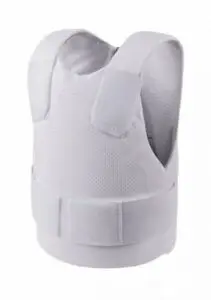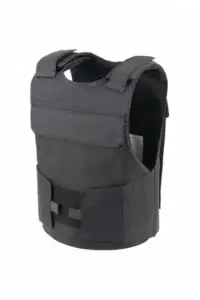This article by Joshua Nash details the levels of protection provided by bullet proof vests. He discusses both soft and hard armor and related ballistic information.
Levels of protection available for bullet proof vests is knowledge you should have whether you’re issued armor, or you purchase your own. Body armor technology constantly evolves toward improved effectiveness and comfort, and its importance to your safety can never be overestimated.
This article by Joshua Nash details the levels of protection provided by bullet proof vests. He discusses both soft and hard armor and related ballistic information.
The Levels of Protection Available in Bullet Proof Vests
by Joshua Nash for SafeGuard Armor
By utilizing improvements in materials technologies, as well as the accessibility of design technologies like 3D printing and augmented reality, manufacturers of bullet proof vests can easily create far better products than ever before.
This means that vests can be made thinner, lighter, and more flexible without compromising protection. Indeed, even high ballistic levels of protection can now be worn in a covert vest. Bullet proof vests increasingly offer stab and spike protection as standard with little to no increase in weight or size.
Of course, the increasing range of levels of protection can make it harder to know exactly what your bulletproof vest can offer you in terms of protection. The number of options available means that all manner of unique situations can be catered for, and it is important that you find the right vest for the environment you will be working in.
Fortunately, the testing and standardization of protection remains the same, and vests must still meet the same standards. The levels of protection in a bullet proof vest outline exactly what it can protect against, and it is important that you understand these levels.
Soft Armor - Levels of Protection
Ballistic protection is standardized according to testing standards set by the National Institute of Justice, the world-leader in ballistics testing. This organization then assigns levels (NIJ Levels), so you can easily see at a glance what ammunition each level of vest can protect against.
Bulletproof vests that use Kevlar and similar materials to offer ballistic levels of protection are known as Soft Armors; whereas, vests that use rigid plates of ceramics and/or polyethylene are known as Hard Armors. Hard Armor will also utilize the soft fabrics found in Soft Armor materials to help absorb the impacts of attacks. Soft Armor is available up to and including NIJ Level IIIa, which not only provides the protection offered by lower levels, but it can also protect against high velocity 9mm full metal jacketed round nose bullets, as well as .44 Magnum jacketed hollow points.
Wide Variety of Rounds
Each level of protection can stop the ammunition listed at lower levels. Level IIa armor is considered the minimum recommended protection for all armor, and it is capable of protecting against 9mm full metal jacketed round nose and .40 SW full metal jacketed ammunition. These munitions are commonly found in most handguns.
Even this basic level is capable of protecting against a wide variety of rounds, with 10mm Auto, .357 SIG, and even .45 ACP rounds all covered by this level of protection. The Level II armor, conversely, can protect against all this as .357 Magnum jacketed soft points and the 9mm Parabellum fired at higher speeds. As mentioned above, however, the 9mm fired from a semi-automatic will require Level IIIa armor.
Hard Armor - Levels of Protection
While Soft Armor can be achieved using only flexible fabrics, Hard Armor uses rigid plates that are naturally much heavier and inflexible. This means that, at higher levels of protection, armor will be heavier and far less flexible. Higher level vests will consist of a Kevlar panel in a carrier that also holds an additional rigid plate, usually made of ceramics and/or polyethylene, over the top. These plates provide much stronger protection at the cost of weight and flexibility.
Hard Armor is available at NIJ Level III and IV which is the highest available level of ballistic protection. Level III hard armor protects against 7.62mmx51mm NATO full metal jacketed rifle rounds, as well as the 5.56x45mm NATO round. Most rifle and automatic rounds are covered by the Level III, including such staples as the .30-06 and the .308 Winchester. However, the highest level of protection, the Level IV, offers protection against all these bullets, as well as armor-piercing variants.
Heavier and More Inflexible
While Hard Armor is heavier and more inflexible compared to Soft Armor, they are still relatively lightweight and unobtrusive thanks to improvements to material technologies. This means that higher levels of protection, such as Level III and IV protection can be achieved even in a covert vest. Many bullet resistant vests are now available in covert styles with the capability of housing additional Level III or IV plates. This means you can have protection against more powerful weapons in a discreet package.
Related Content for Levels of Protection
Advertisements



